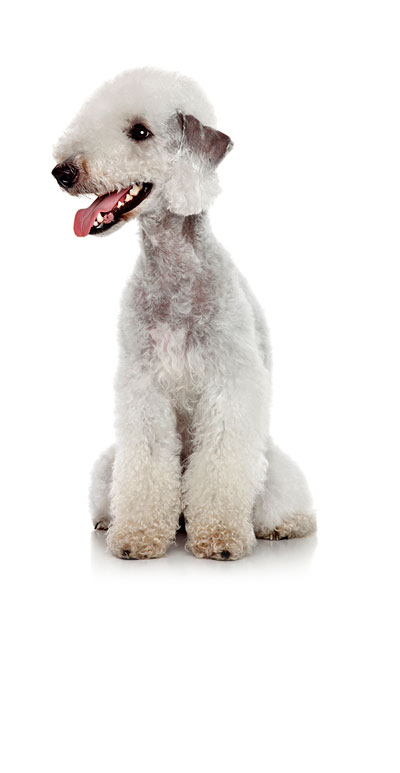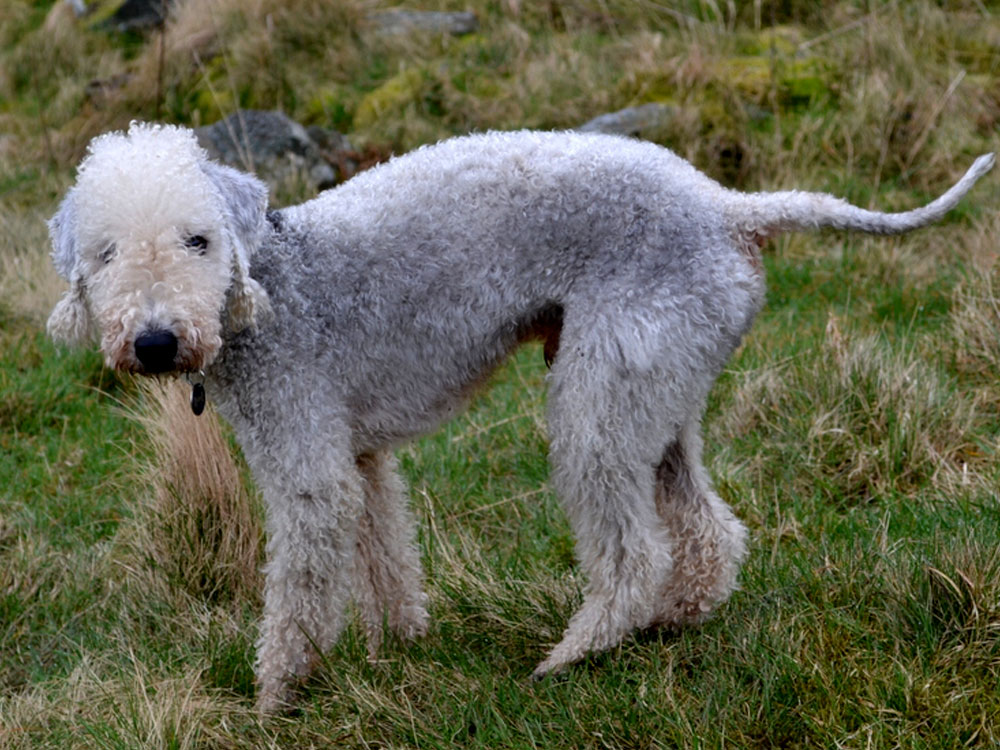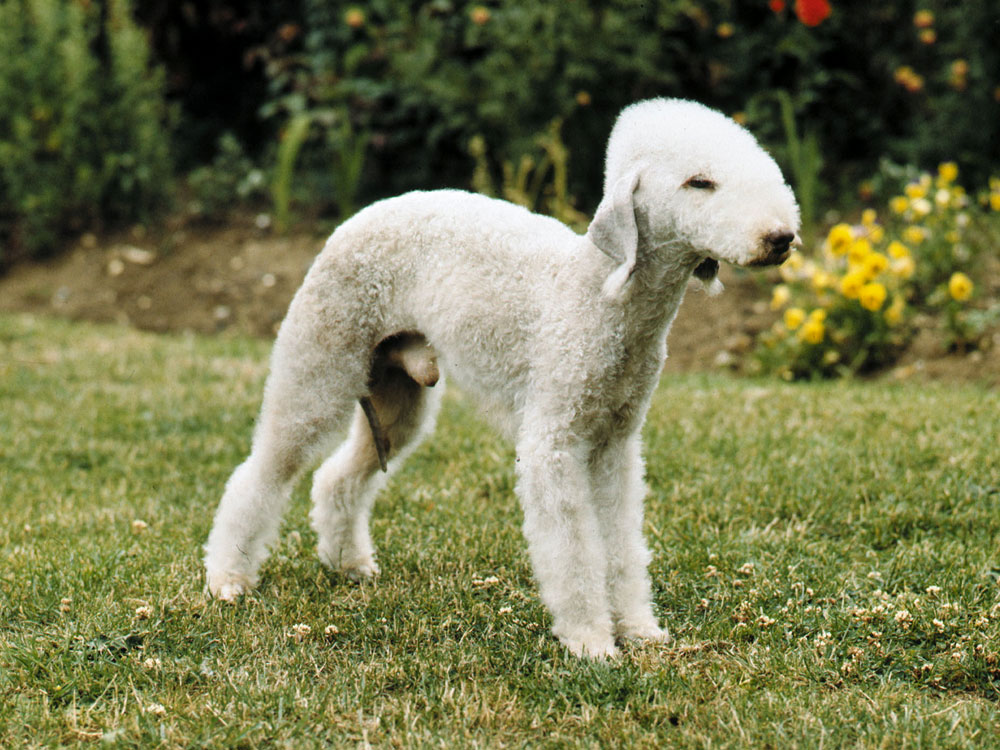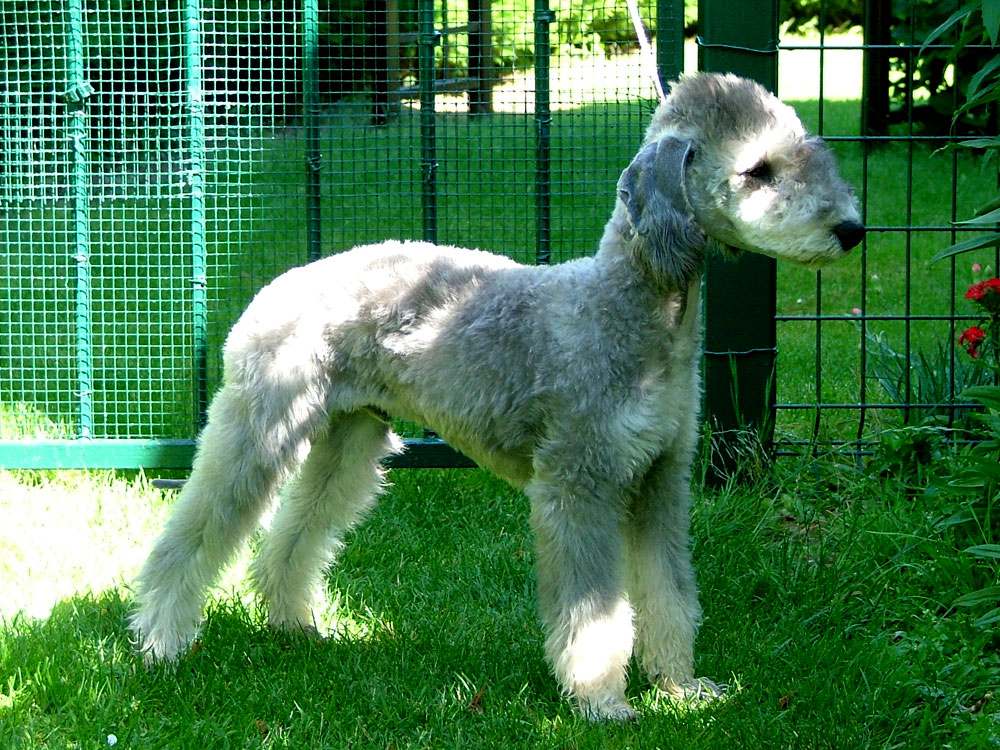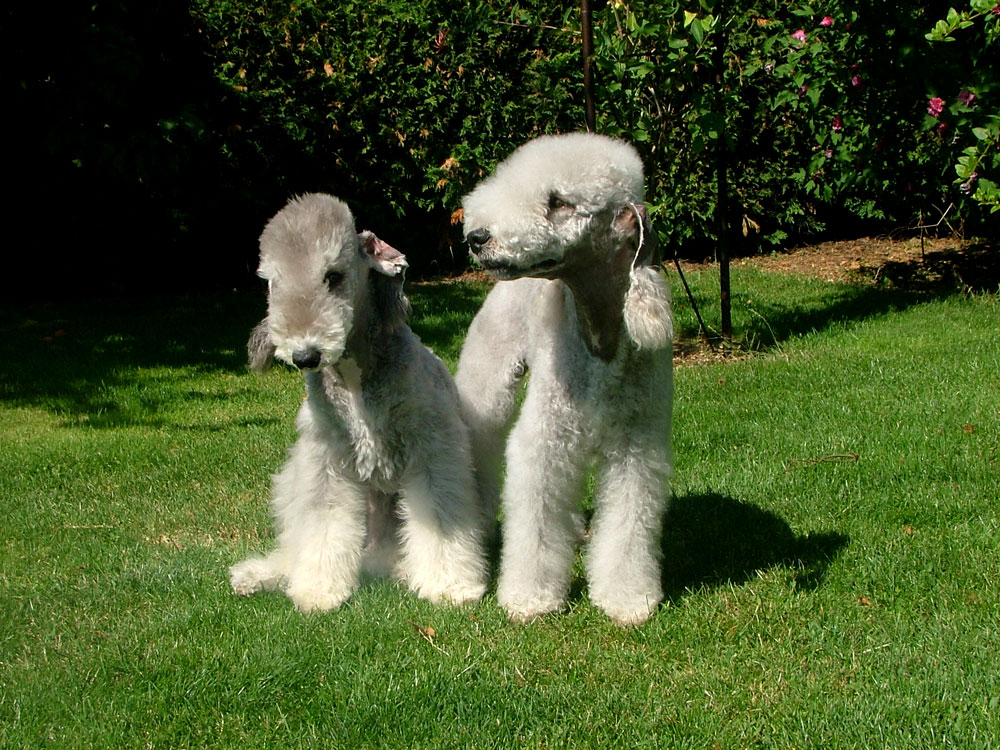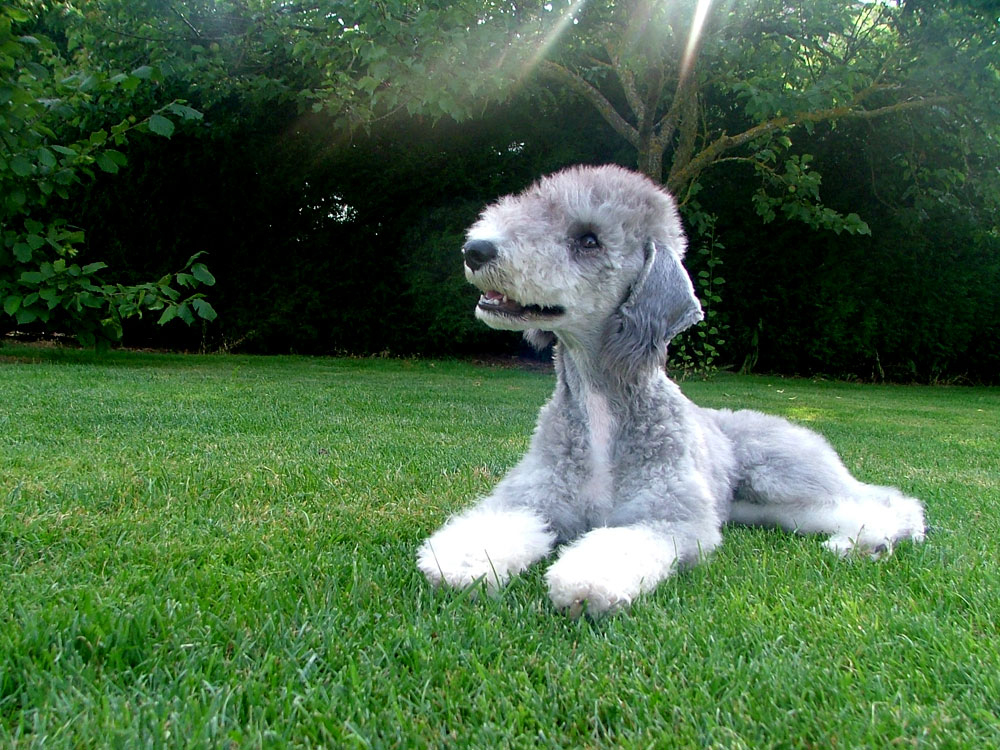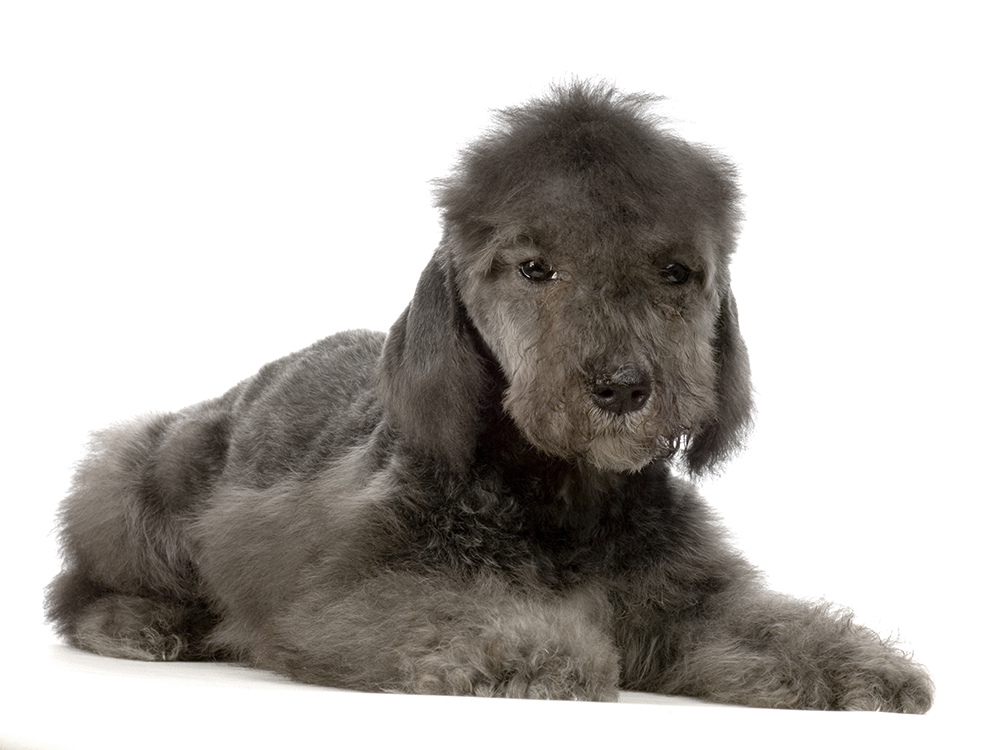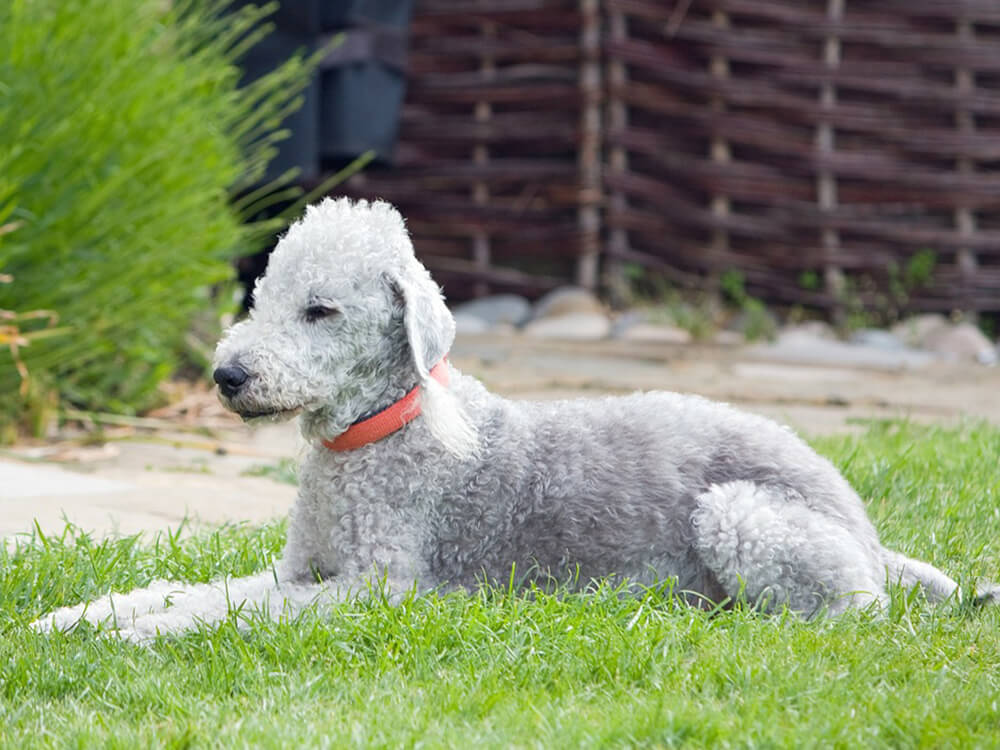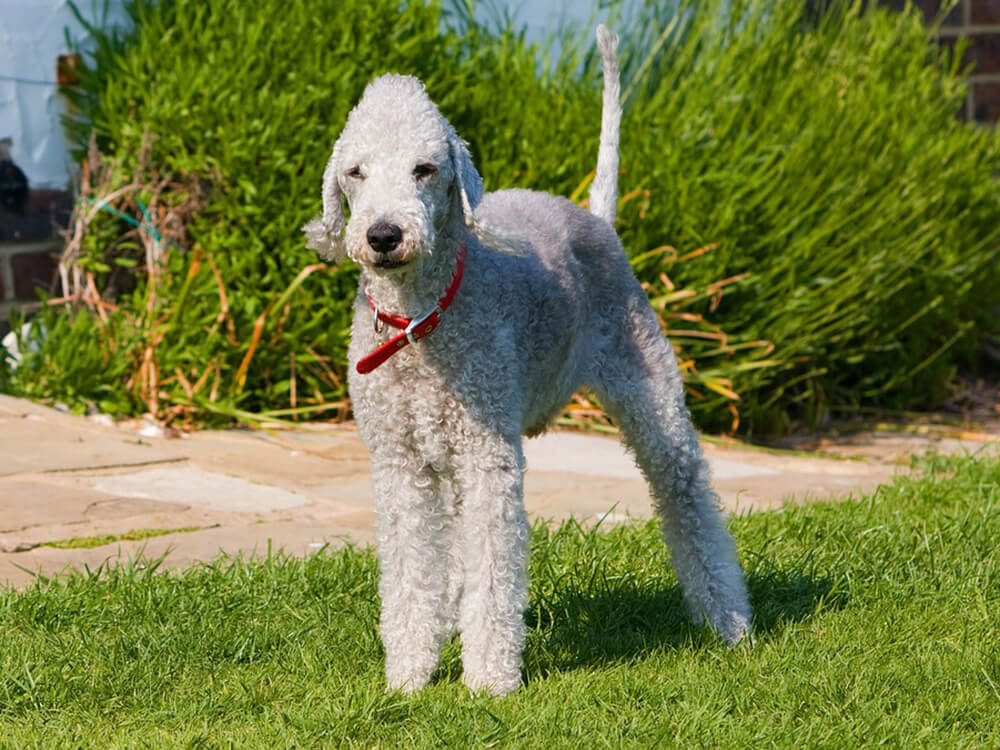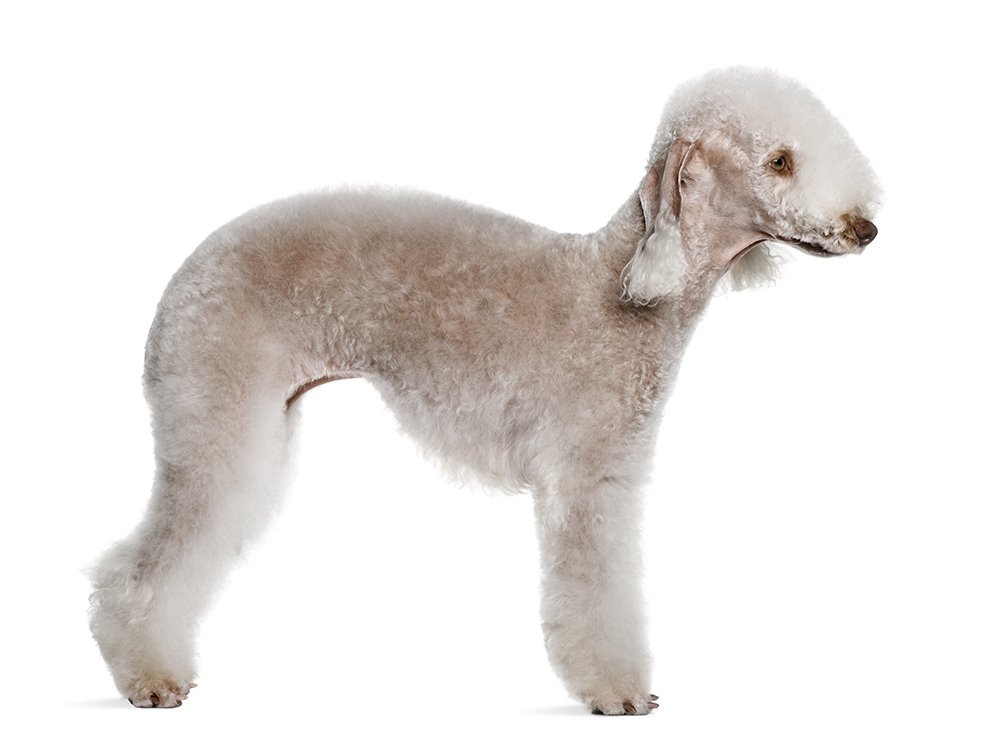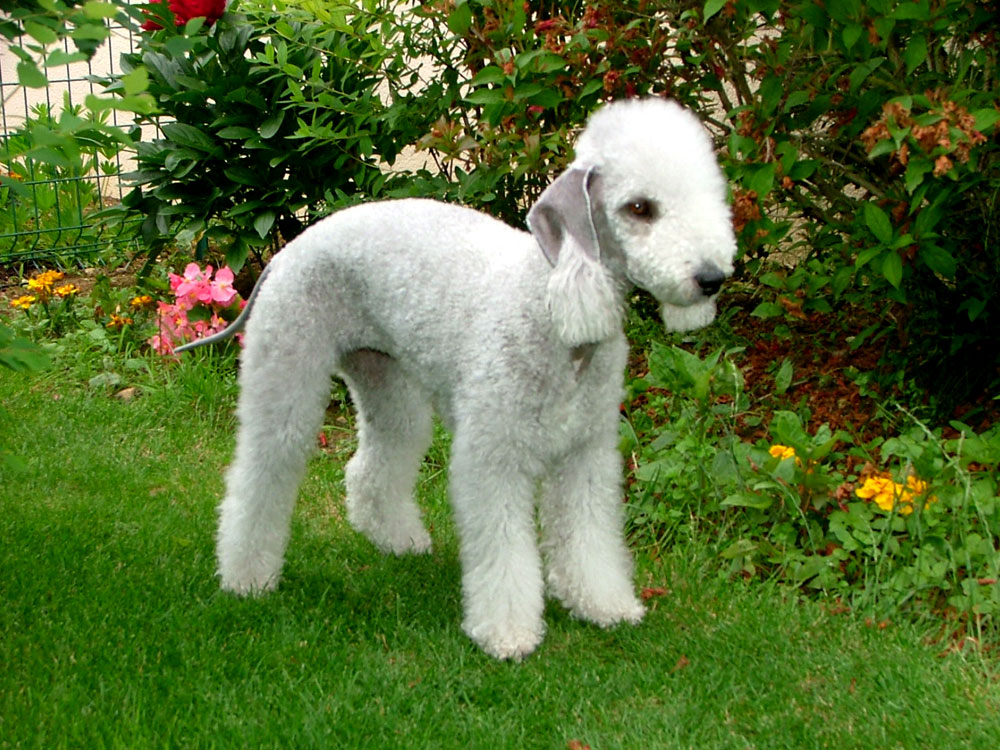
Bedlington Terrier Breed Pictures
Vital Breed Stats
| Height: | 41 - 43 cm M | 38 - 41 cm F |
| Weight: | 8 - 10 kg M | 8 - 10 kg F |
| Breed Group: | Working Dog Group |
| Life Expectancy: | 15 - 18 years |
| KC Registered: | No |
Breed Characteristics
| Size: |  |
| Grooming: |  |
| Exercise Level: |  |
| Trainability: |  |
| Barking Level: |  |
| Good with Children: |  |
| Good with other pets: |  |
| Affectionate: |  |
| Protective: |  |
| Cost to Keep: |  |
Give a thumbs up if you love the Bedlington Terrier

0
More About the Breed
History
The Bedlington Terrier was developed in the village of Bedlington, Northumberland, England. It used to be known as the gypsy dog because it helped gypsies and poachers hunt rats and badgers. When it caught the attention of the Lord of Rothbury, it was named Rodbury terrier, Rothbury terrier, and Rothbury’s lamb. The first one to be called Bedlington Terrier was Joseph Ainsley’s dog named Ainsley’s Piper in 1825.
The Bedlington was valued as a racing and rabbit coursing dog. To increase its speed and agility, it is believed that it was crossed with the whippet. Having similarities with the Kerry blue terrier, Dandie Dinmont terrier, and soft-coated wheaten terrier, some speculate that they may share the same ancestry.
The breed officially joined the ring show during the 1800s. The National Bedlington Terrier Club, on the other hand, was formed in England in 1877.
Appearance
With lamblike features, the Bedlington is a graceful and agile dog. It stands 38–40 centimetres tall at the withers and weighs 18–23 pounds. It has a rounded head with no stop, almond-shaped eyes, and close-fitting lips.
The breed has a distinctive coat, which is a unique combination of soft and harsh hair. It feels crisp, but it is actually not wiry. It tends to curl specifically in the head and face. According to the Kennel Club standards, the acceptable colours are blue, liver, or sandy with or without tan. A blue Bedlington must have a black nose, whilst liver and sandy must have brown noses.
Grooming
Like most terrier breeds, it does not require stripping. It is a mild shedder and needs weekly combing. It should be clipped to maintain a crisp look, which can be done at home or at a professional groomer’s.
It is also important to ensure that a Bedlington’s ears are clean, nails are clipped, and skin is checked for abnormalities and fleas. Ignoring these aspects of basic grooming can often lead to infection and diseases.
Temperament
Intelligence
This breed is intelligent and is moderately easy to train, especially if it knows the benefits it will receive. Make use of plenty of positive reinforcements because harsh words and physical force would not work. Training should involve praises, playtime, and treats. It would enjoy agility workouts where it can display its grace and speed.
Before getting a dog, make sure to do your research to have an idea of the temperament and personality it is predisposed to have as a breed. However, each dog is unique, and training, socialisation, and environment can influence the overall characteristics of your dog.
Nutrition
- Senior and less active: up to 580 calories daily
- Typical adult: up to 660 calories daily
- Physically active/working dog: up to 730 calories daily
Feeding
Health
Exercise
Cost of Ownership
Dog ownership is a huge responsibility since this type of pet has complex needs. Apart from establishing routines and setting rules, owners need to think about the financial aspect as well. The cost of buying a well-bred Bedlington Terrier can be around £400 to £700. Basic pet insurance costs around £300 annually, whilst a lifetime policy can be around £540 a year.
You also have to factor in high-quality food, basic pet equipment, regular vet check-ups, and necessary preventive care treatments, which will cost £90 a month or a little over £1,000 a year. These steep numbers don’t even include unexpected veterinary treatments and procedures not covered by your policy.
Is a Bedlington Terrier Right for You?
- The Bedlington Terrier is a lamblike dog that is agile and graceful.
- It is comical, intelligent, and protective of its owners.
- It has a moderate energy level that can easily adjust to its owner’s activity level.
- Its coat, a combination of soft and harsh hair, needs to be clipped to maintain its crisp look.
- The breed is intelligent, yet it may refuse to cooperate during training if it does not get any rewards.
